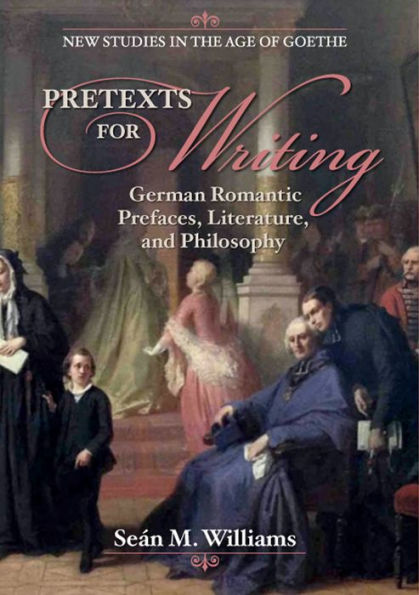Around 1800, print culture became a particularly rich source for metaphors about thinking as well as writing, nowhere more so than in the German tradition of Dichter und Denker. Goethe, Jean Paul, and Hegel (among many others) used the preface in order to reflect on the problems of writing itself, and its interpretation. If Sterne teaches us that a material book enables mind games as much as it gives expression to them, the Germans made these games more theoretical still. Weaving in authors from Antiquity to Agamben, Williams shows how European–and, above all, German–Romanticism was a watershed in the history of the preface. The playful, paradoxical strategies that Romantic writers invented are later played out in continental philosophy, and in post-Structuralist literature. The preface is a prompt for playful thinking with texts, as much as it is conventionally the prosaic product of such an exercise.
Published by Bucknell University Press. Distributed worldwide by Rutgers University Press.
1128881704
Published by Bucknell University Press. Distributed worldwide by Rutgers University Press.
Pretexts for Writing: German Romantic Prefaces, Literature, and Philosophy
Around 1800, print culture became a particularly rich source for metaphors about thinking as well as writing, nowhere more so than in the German tradition of Dichter und Denker. Goethe, Jean Paul, and Hegel (among many others) used the preface in order to reflect on the problems of writing itself, and its interpretation. If Sterne teaches us that a material book enables mind games as much as it gives expression to them, the Germans made these games more theoretical still. Weaving in authors from Antiquity to Agamben, Williams shows how European–and, above all, German–Romanticism was a watershed in the history of the preface. The playful, paradoxical strategies that Romantic writers invented are later played out in continental philosophy, and in post-Structuralist literature. The preface is a prompt for playful thinking with texts, as much as it is conventionally the prosaic product of such an exercise.
Published by Bucknell University Press. Distributed worldwide by Rutgers University Press.
Published by Bucknell University Press. Distributed worldwide by Rutgers University Press.
37.95
In Stock
5
1

Pretexts for Writing: German Romantic Prefaces, Literature, and Philosophy
278
Pretexts for Writing: German Romantic Prefaces, Literature, and Philosophy
278Related collections and offers
37.95
In Stock

Product Details
| ISBN-13: | 9781684480548 |
|---|---|
| Publisher: | Bucknell University Press |
| Publication date: | 03/01/2019 |
| Series: | New Studies in the Age of Goethe |
| Sold by: | Barnes & Noble |
| Format: | eBook |
| Pages: | 278 |
| File size: | 876 KB |
| Age Range: | 16 Years |
About the Author
From the B&N Reads Blog
